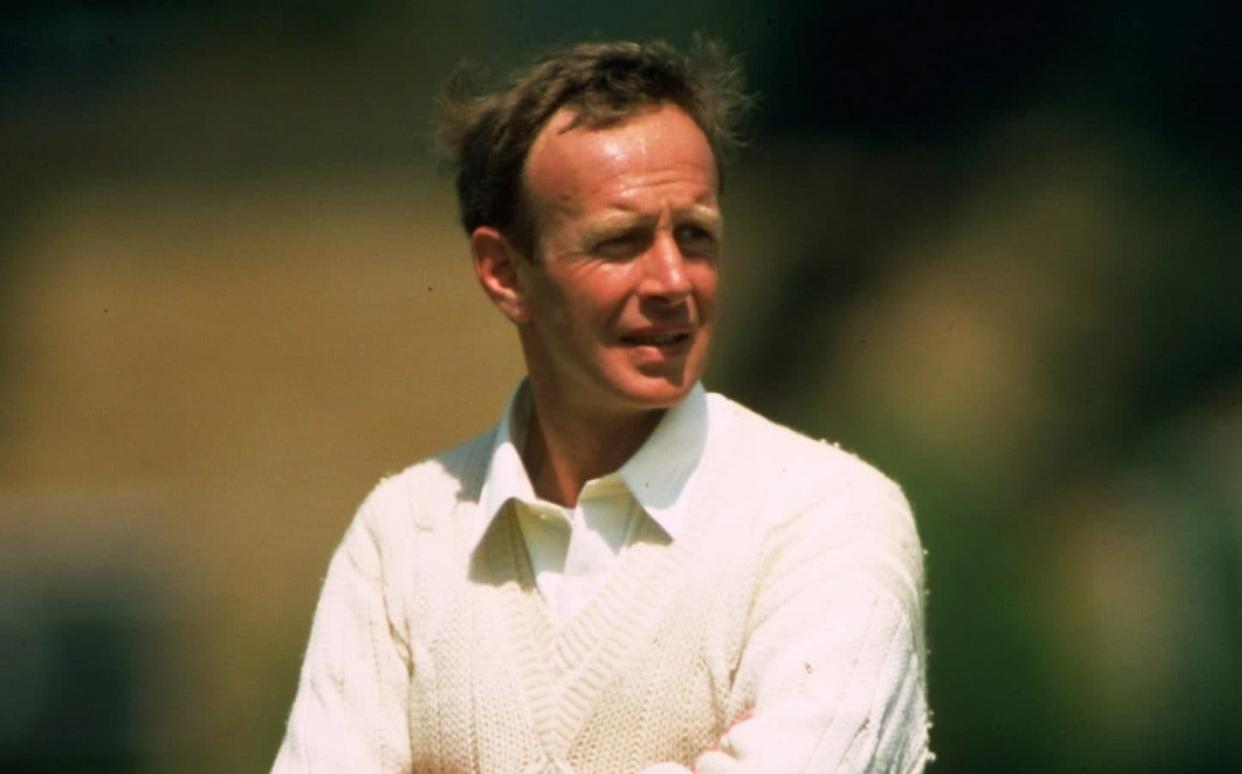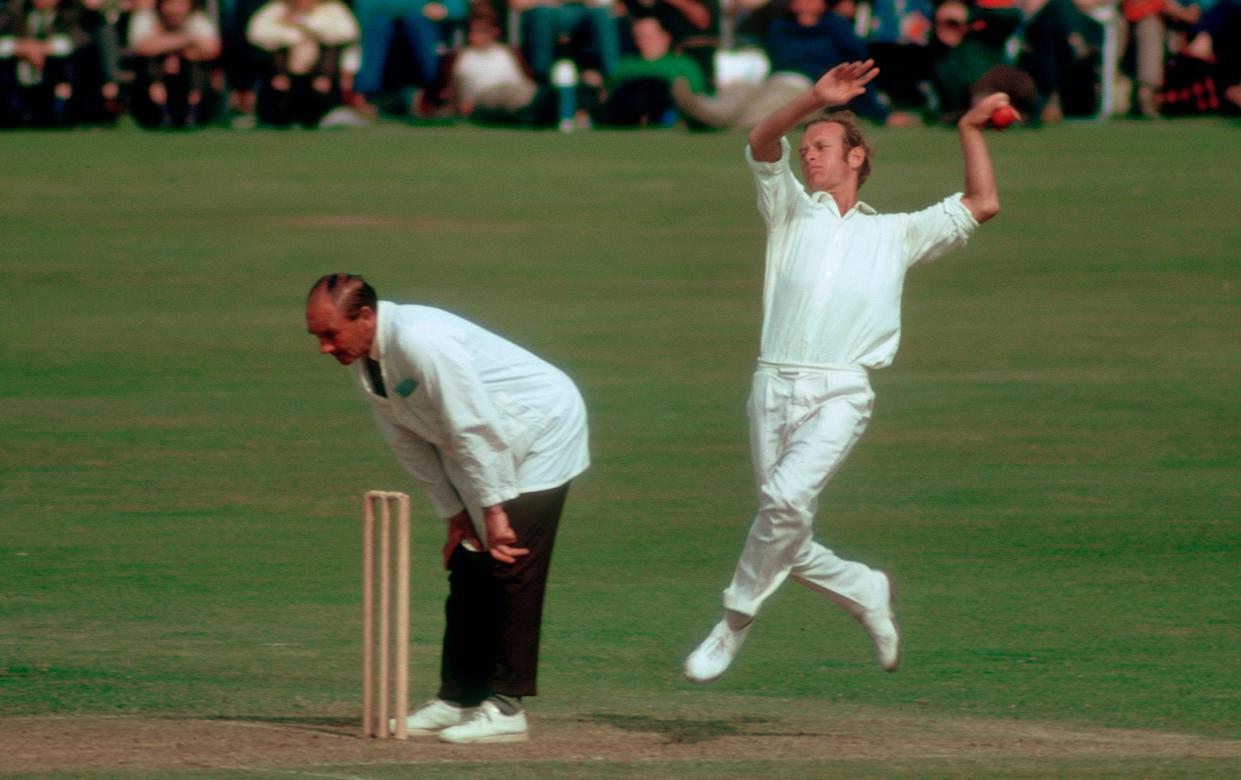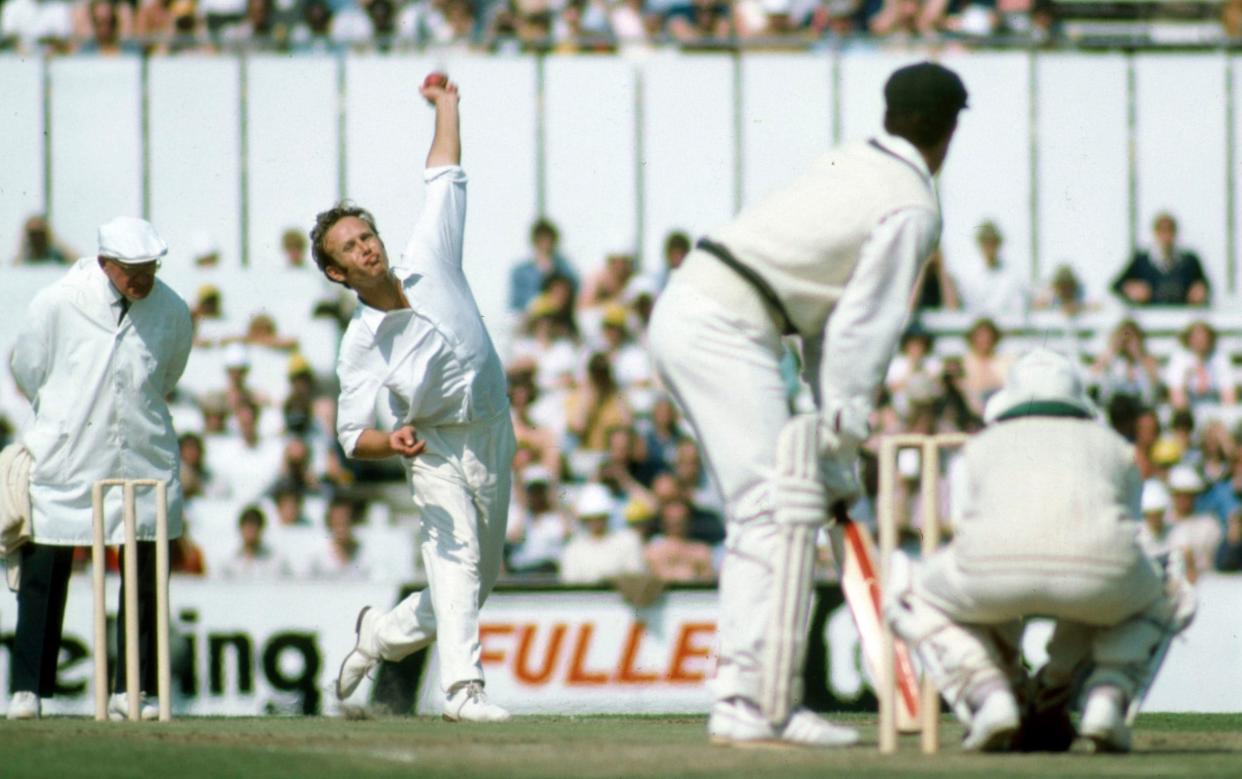Derek Underwood, great England and Kent bowler, dies aged 78

Derek Underwood, a unique bowler for Kent and England, has died at the age of 78.
Kent chair Simon Phillip said in a statement: “The Kent Cricket family is in mourning following the passing of one of its greatest ever players.
“Derek was an outstanding contributor to both Kent and England, winning trophies for club and country and etching his name in the history books forevermore.
“Watching Derek weave his unique magic on a wet wicket was a privilege for all who were able to witness it. His induction into the ICC Hall of Fame shows the esteem in which he was held in world cricket.
“An advocate for growing our game worldwide whilst protecting our sport’s rich heritage, Derek also made substantial contributions off the field as well as on it, and he will be sorely missed by everyone at Kent Cricket.”
His last public appearance was at Canterbury Cathedral in March in 2020 for Kent’s celebration of their 150th anniversary. His gaze was unseeing when he met former team-mates, but amid his battle with dementia, he found a few words: “They tell me Knotty and I made a good combination.”

Underwood was a unique bowler in that he was the only left-arm spinner of note to have bowled at medium pace. How well he did so was summed up by the epithet by which he was universally known: “Deadly.”
From his debut for Kent, aged 17, he ran in a long way for a spinner – almost the length of a pitch – with one arm floating in front of him, the other behind – and with a full body-pivot whacked the ball into the surface. There was nowhere for a batsman to hide. He could not run down the wicket, owing to Underwood’s pace, and if he went in the opposite direction he walked into the hands of Alan Knott, without much question the best wicketkeeper standing up to spin there has ever been.
“Deadly was the ultimate professional with a ball in his hand,” said Paul Downton, Kent’s director of cricket, who also kept wicket to him. “He was fiercely competitive, hated giving runs away, a dream for his captain whether it be at Lord’s in an Ashes Test or at Derby on a Monday afternoon in front of nobody.”
As a fellow spinner, though for Sussex, Robin Marlar analysed Underwood: most top bowlers have fast-twitch shoulder muscles, but Underwood was rare in that he had slow-twitch shoulder muscles, some evidence being that he did not have a strong throw. Hence his long run-up, to generate the pace which his left shoulder could not fully impart.
So instant was Underwood’s impact that he became the youngest bowler to take 100 first-class wickets in his debut season, aged 18 by the end of it. His statistical peak came in 1966 when he took 157 wickets at only 13 apiece.
For the first half of his career, pitches in county cricket were uncovered if it rained during a day – and Kent used many out-grounds where covers were rudimentary. But even after pitches were covered, his spin and infallible accuracy kept chalking up a hundred wickets per season, until he finished his first-class career with 2,465 of them at a mere 20 runs each.
There was a brief period when Ray Illingworth, as England’s captain, preferred Worcestershire’s left-arm spinner Norman Gifford on dry pitches. Not many were of the same persuasion, and Underwood otherwise was a fixture in the England Test side at home or abroad, until he joined World Series Cricket in 1977 and the went on the rebel tour of South Africa in 1982. John Thicknesse, cricket correspondent for the Evening Standard, had laid a bet when Underwood first played for England that he would take 300 Test wickets, as Fred Trueman alone had done, and was particularly disappointed when Underwood ended his England career – by touring South Africa – with 297.
One of the greatest to ever play the game. pic.twitter.com/tm1sD9dZde
— Kent Cricket (@KentCricket) April 15, 2024
His most famous hour was the finale of the Oval Test of 1968 when he ran through Australia on a damp pitch to square the series, although Australia retained the Ashes. In 1974 the Lord’s pitch was not meant to have been damp at all, because Test pitches by then had to be covered at all times, but rain had leaked under the covers. Relations between England and Pakistan have often been strained and it was as well that more rain forced the Test to be called off, before Underwood ran through Pakistan’s second innings.
What was almost unique, aside from Underwood’s method, was his personality. Most great bowlers are predators by nature; Underwood was as mild, as un-deadly, as a fellow can be. I remember emerging from an Indian Airlines toilet in 1981-82, after using all the facilities simultaneously, and Deadly was the only passenger whose smile was sympathetic.
“Without the ball Deadly was the opposite of an athlete – ten to twos, a reluctant practiser, fag on with a cup of tea 20 minutes before the game and fag on with a pint of beer after the game,” Downton recalled. “A totally honest old-fashioned pro, one of the politest, most generous men you could meet. Always gave people time, loved talking cricket, incredibly humble, a really good man.”

Hence, in spite of being a former professional, Underwood was president of MCC in 2008, nominated by his former England captain Michael Brearley. He had already received a MBE.
Ball in hand, however, he was a dentist, drilling away at one tooth after another, maiden over after maiden, until the batsman was bowled or propped forwards once too often and was caught close in. Colin Cowdrey was the deftest of slippers, Knott his supreme henchman.
There were no helmets in Underwood’s days until the first prototypes in 1977 and they were for batsmen. Knott had to stand up on dodgy pitches to medium-pace without a helmet or visor to protect him from a ball flying off the edge – or a flying bail, like the one that terminated the career of South Africa’s Mark Boucher. Knott was a human doll, flexible in the extreme. A look upwards to tell Underwood to toss the ball up, a look down at the pitch to tell him to fire it through: that was the only signal in their symbiosis.
Yes, it was true. Knott and Underwood were a good combination.


